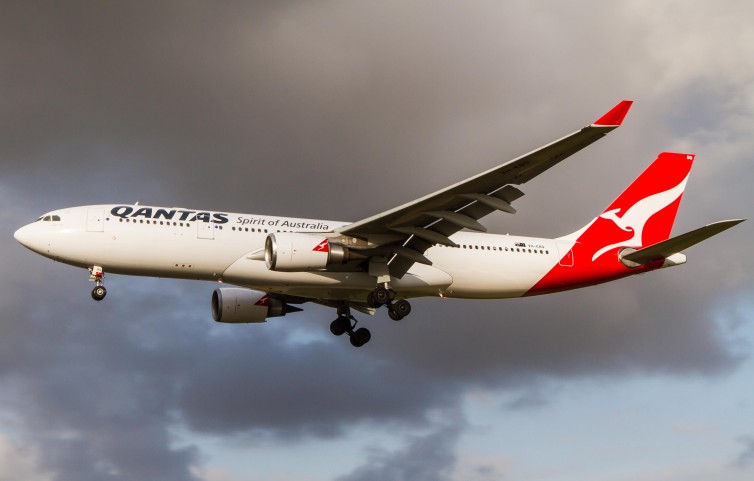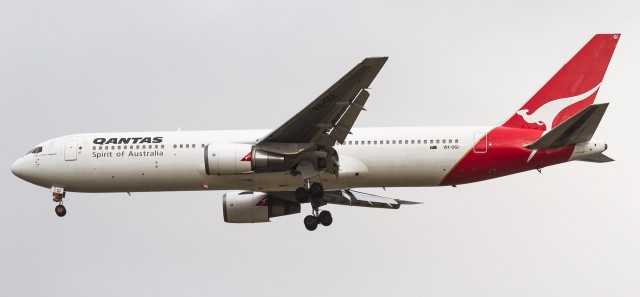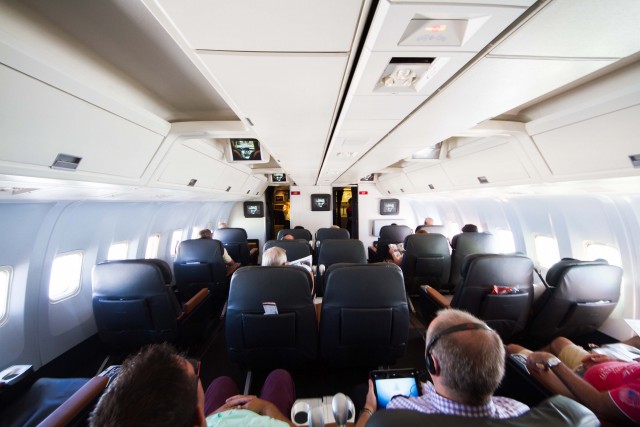
Qantas Airbus A330-200 aircraft now feature the upgraded business class cabin ’“ Photo: Jacob Pfleger | AirlineReporter
Over the last 18 months, Qantas has been progressively upgrading their business class product on their Airbus A330-200 aircraft. The new business suites bring the product in line with the ever-increasing trend of direct aisle access for all business class passengers, as well lie flat beds — a first for Qantas on the domestic market. The upgraded A330-200 cabins are configured with 28 lie-flat seats in a 1-2-1 configuration that can remain in the recline position during takeoff and landing.
It has been quite some time since I last had the opportunity to fly domestically in business class with Qantas, and with my annual trip to Australia, I thought I would burn some Qantas frequent flyer points to check out their new business suites on the popular Sydney-Melbourne route, a very short 95-minute flight.

Qantas’ Boeing 767-338ER, a common sight in Australian skies over the past 30 years – Photo: Jacob Pfleger | AirlineReporter
The 27th of December marked the end of an era in Australian aviation. Qantas retired the Boeing 767 fleet from passenger service.
Let’s take a brief look at the history of this true workhorse and Australian icon that has been part of the Qantas fleet for almost 30 years. Qantas took delivery of its first 767, a -200 series extended range aircraft, in 1985. The type was first introduced on the carrier’s services to southeast Asia as well as on trans-Tasman and Pacific routes.
In 1987, the carrier placed an order for the larger -300ER series. The -300ER not only had a larger capacity but also an increased range and more powerful General Electric CF6-80 engines. The 767-300ER was delivered to Qantas in a two-class configuration. There were two variants of this configuration, one for international service which had 25 business class and 204 economy class seats, and the domestic configuration, which had 30 business class seats and 224 economy class seats.

A unique configuration, 1-2-2 on the international version of the Qantas Boeing 767-338ER – Photo: Jacob Pfleger | AirlineReporter
The internationally-configured 767s were unique in that business class was configured in a 1-2-2 layout, and the 767s were the first Australian aircraft to offer in-seat IFE in business class. The economy cabin was also unique in that there was a “pod” at the front of the cabin for crew rest, as well as two rows of seats at the rear portioned off for additional crew rest.
Following the deregulation of the Australian domestic market in 1990, Qantas was permitted to once again operate domestic flight routes. With the introduction of the 767 into the fleet, and the domestic deregulation which allowed for increased passenger demand, Qantas used the 767 on domestic Australian flights. The domestic market is where the aircraft really became a true Australian icon. It was deployed on pretty much every major domestic route within the country; the most popular routes were the transcontinentals to Perth, as well as the main east coast triangle routes connecting Sydney, Melbourne, and Brisbane.


